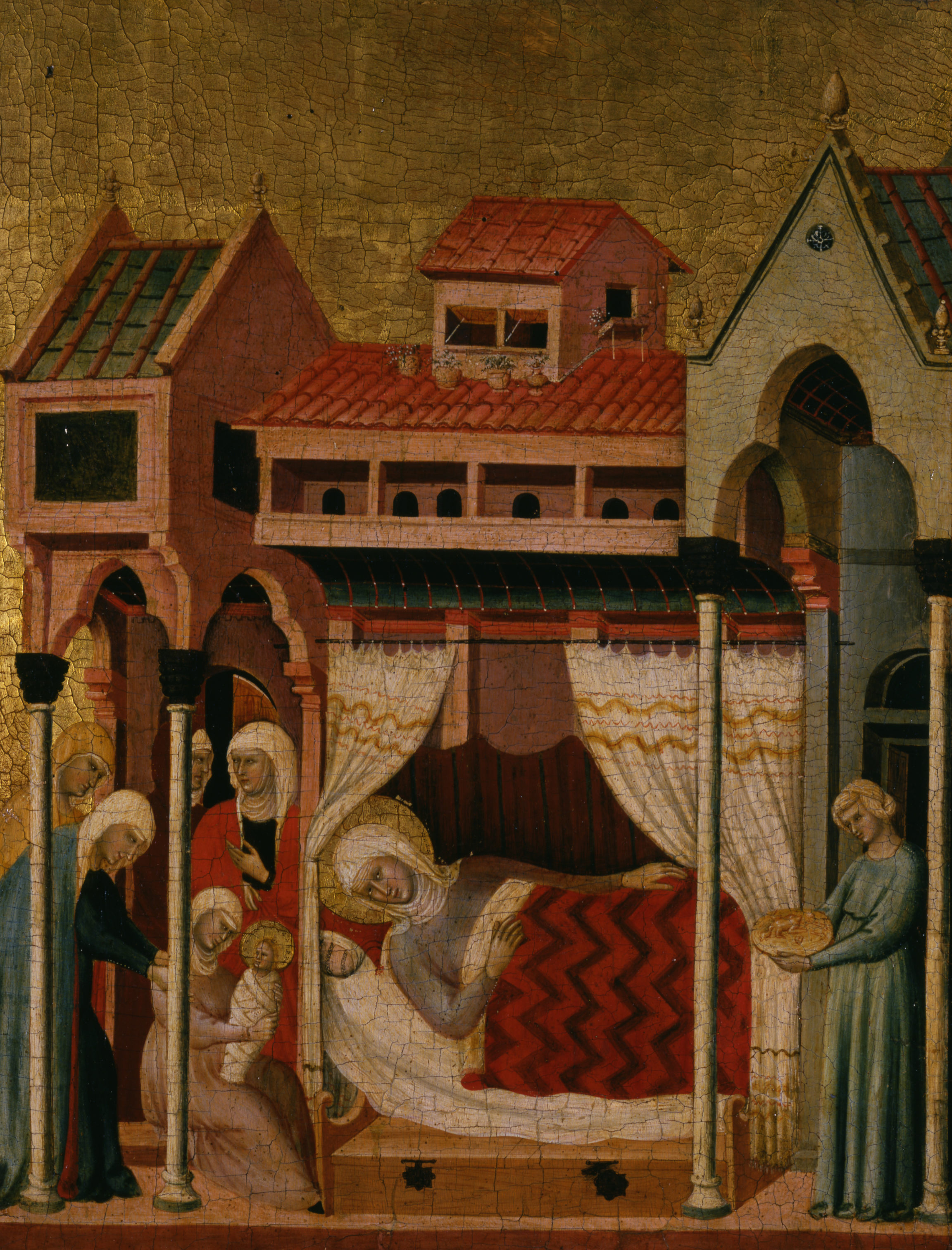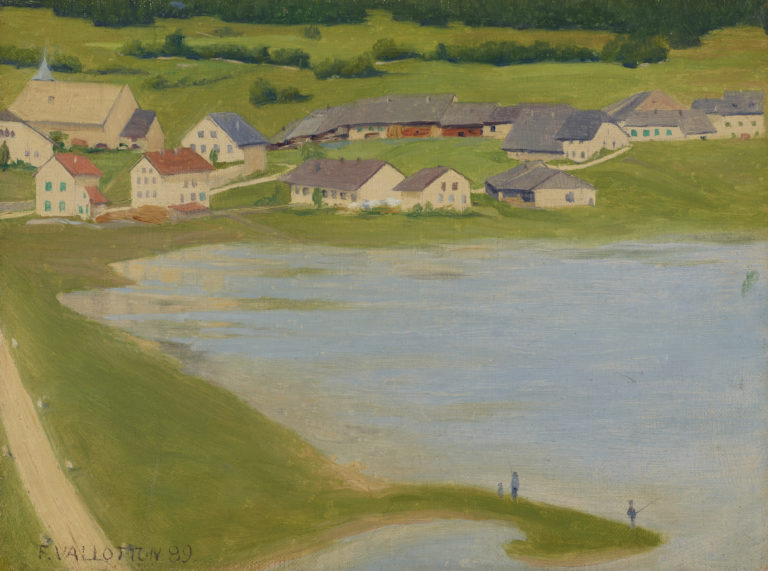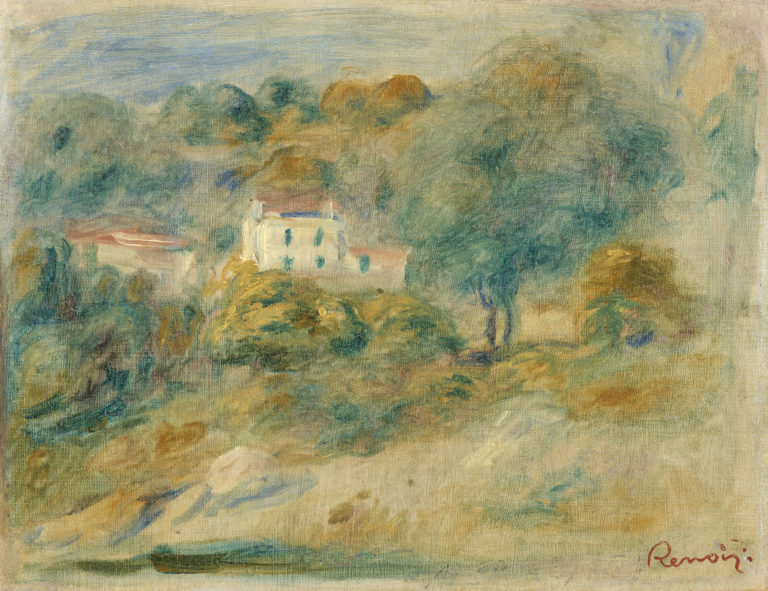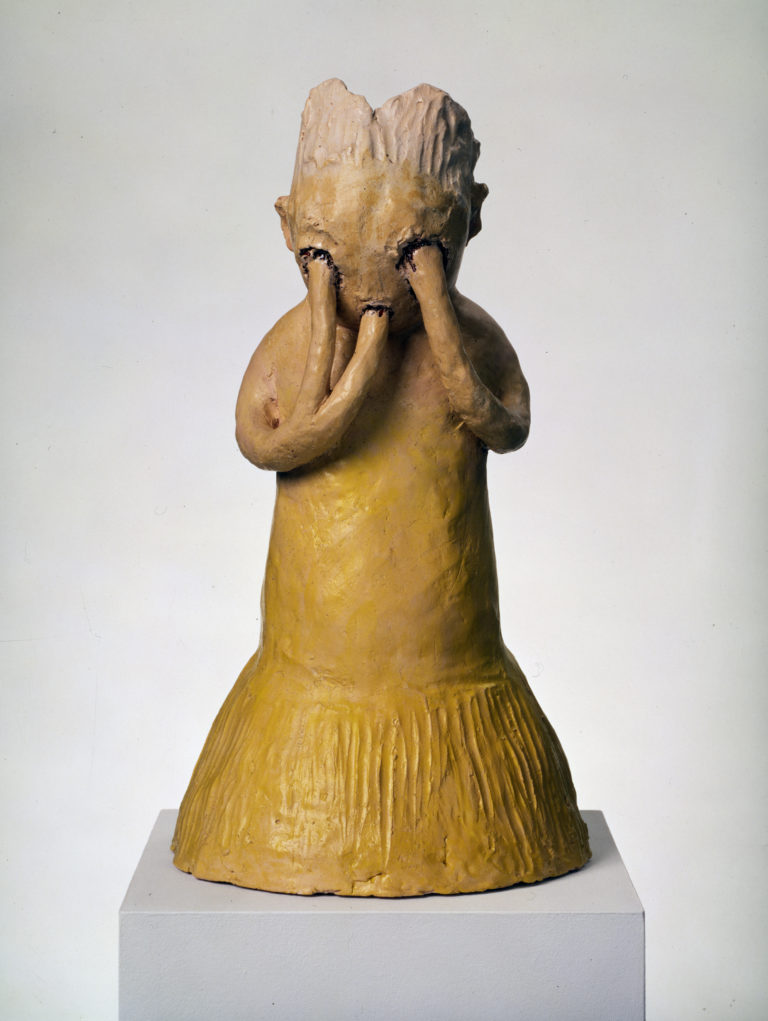Bibliography
Silvia Costa Paillet, ‘Un quadre del Trecento Italià, donat per Francesc Cambò, es conserva al Museu de Belles Artes de Lausana,’ Plancò, n. 80, 2001: 16-20.
Mauro Natale (ed.), Peintures et sculptures italiennes et espagnoles: collections de Musée cantonal des Beaux-Arts de Lausanne, Les Cahiers du Musée des Beaux-Arts de Lausanne n. 7, 1998: n.1.
Laurent Golay, ‘Des formes de l’identification. La Naissance de la Vierge du Maître de la Madone Cini,’ in Entre Rome et Paris: œuvres inédites du XIVe au XIXe siècle, Les Cahiers du Musée de Lausanne n. 4, 1996: 3-8.




This representation of the birth of the Virgin bathes in the universality of the divine presence manifested by the gold ground. At the centre, we see Saint Anne in her bed, looking out at the viewer; on the left, five veiled servants, one of them holding Mary in her swaddling clothes; on the right, a young girl brings food. The realistic details (fabrics, tiles, pots of flowers) give a contemporary twist to the episode narrated in the Biblical apocrypha. The perspective ‘signifies’: the size of the figures is proportional to their importance. The architecture, which combines the profane and religious registers, presents a complex analysis of space, a century before the invention of central perspective.
This remarkable panel was originally part of an altarpiece whose central panel, representing the Virgin and Child with Saint Claire and Saint Francis, is now held at the Fondazione Giorgio Cini in Venice, while its three other panels and two side wings (the Annunciation, Presentation in the Temple and Death of the Virgin) are at the Museu Nacional d’Art de Catalunya in Barcelona. It bears witness to a key moment in painting in medieval Emilia Romagna: the creative explosion provoked by Giotto’s presence in Rimini, where he had been summoned by the Malatestas in about 1300 to decorate the apse of the church of Saint Francis. There have been numerous hypotheses about the identity of the painter of this altarpiece. Because of the manifest influence of Giotto, he was at first referred to as a ‘Friend of Giotto’ and then, when the parts of the Franciscan triptych were reassembled, as the ‘Master of the Cini Madonna’. Today, the ensemble is attributed to Francesco da Rimini.
Acquired in 1929 by the Catalan politician Francesc Cambó, this Birth of the Virgin was gifted to the Museum in recognition of the hospitality extended to his collection by the institution during the Second World War.